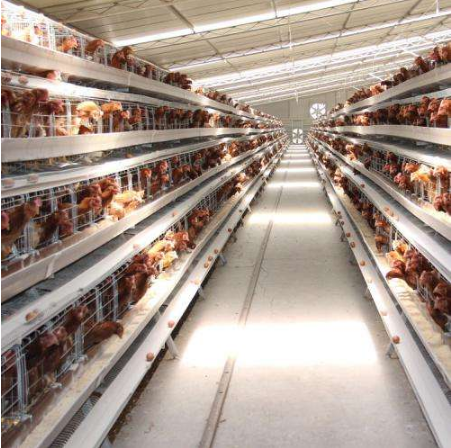The regular disinfection of layer chicken cages is of great significance for poultry farming. Proper and effective disinfection can kill the bacteria on the cage, reduce the chance of disease in the flock, and clean the house to allow the flock to breathe fresh air. The following author will tell you how to effectively disinfect the chicken cage.
1. Reasonable choice of disinfection drugs: The choice of disinfection drugs should be targeted. According to the purpose, object and epidemic trend of disinfection, drugs should be selected according to the principle of high efficiency, broad spectrum, economy and side effects. At present, the following types are commonly used: chlorine, the side effects are small, the higher the temperature, the stronger the bactericidal power, and the more the drinking water is disinfected. The quaternary ammonium salts have a strong killing effect on Gram-positive bacteria, and are often used for disinfection of sheds and equipment. Formaldehyde is effective against bacteria and viruses, but it is slow, corrosive, and is often used for disinfection in sheds. Different pathogenic microorganisms have significantly different sensitivities to disinfectants. For example, microorganisms that form spores are less sensitive to disinfectants, and thus the concentration, action, and time of the drugs used are increased. Most disinfectants have effects on bacteria, but have little effect on bacterial spores and viruses. Therefore, the characteristics of pathogenic microorganisms should be considered when eliminating infectious diseases, and disinfectants should be selected correctly.
2. Maintain a suitable temperature: In addition to the flame disinfection relies entirely on temperature to kill microorganisms, other disinfection methods are also affected by temperature changes. The bactericidal effect of the disinfectant is proportional to the temperature, the temperature is increased, and the bactericidal effect is enhanced, so the summer disinfection effect is stronger than that in winter. Disinfection in the high temperature season in summer can reduce the temperature of 3 to 4 °C, and play a role in heatstroke prevention and cooling of the chickens, effectively reducing heat stress. In the winter, the temperature should be raised by 1~2 °C before disinfection to reduce the impact of disinfection and cooling. When the fumigation method is adopted, the disinfection effect is lowered at a temperature of 15 ° C or less, and the disinfection effect is best at an ambient temperature of 25 ° C to 40 ° C.
3. Maintain proper humidity: Ambient humidity has a great influence on fumigation and disinfection. Humidity or too low humidity will affect the disinfection effect and even lead to disinfection failure. When fumigating with formaldehyde or peracetic acid. The humidity is required to be 60% to 80%. In addition, most disinfectants lose their disinfection after drying, and solution-type disinfectants can only function effectively when in solution. When the relative humidity is 60% or less, the bactericidal power is strong. When the relative humidity is 80% to 90%, the sterilizing power is decreased by 30% to 40%. This is because the increase in relative humidity affects the penetration of ultraviolet rays.
Finally, the author reminds the farmers according to the recommendations of the poultry farming equipment suppliers that the disinfectant used is irritating to the skin and mucous membranes and should be avoided. When disinfecting, wear acid and alkali resistant gloves. Wear a helmet when spraying fire to prevent splashing of the eyes and causing damage to the conjunctiva. Formaldehyde vapor is highly irritating. After disinfection, open the door and window of the chicken house for more than two days to dissipate the formaldehyde gas.
